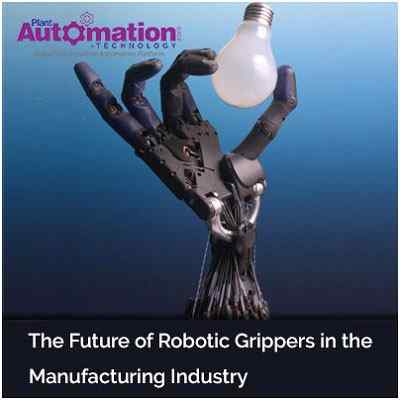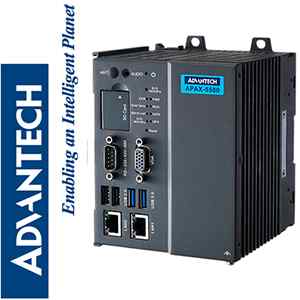The Future of Robotic Grippers in the Manufacturing Industry

As manufacturers are keen on enhancing production, efficiency, and reducing overall costs simultaneously, the automation trend currently has engulfed a wide range of industrial domains worldwide. In recent years, the demand for robotic grippers has surged at a commendable pace, owing to rapid progress in AI and gripping technologies. Moreover, manufacturers working in the robotic gripper backdrop have significantly increased their focus on developing cutting-edge and innovative grippers, mainly from the electronic and semiconductor, and automotive industry. The robotic arm grippers are frequently used as the stepping stone" to automation and industrial robotics. Either you can remotely control or program a robotic arm to pick up and manipulate objects at a distance. Besides, the onset of Industry 4.0 is expected to create lucrative opportunities for robotic gripper manufacturers in the coming years. The integration of smart IoT enabled sensors in robotic components has also played a crucial role in the assessment and maintenance of robotic grippers.
Important Aspects to be considered for Robotic Grippers
There's a push for enhanced manipulation capabilities of robotic grippers, with the advancement of robotic applications in e-commerce order fulfillment, manufacturing, and other pick and place applications. Such is the case especially with collaborative robots, which require robotic grippers that can handle a widening variety of objects in repetitive, and fast tasks. The needs of the electronics, food processing, automotive industries have propelled the development of claw, parallel, rotary, magnetic, and vacuum grippers. Different types of robotic grippers are used in the plastics, pharmaceutical, and agricultural industries, besides consumer-packaged goods. Packaging, material handling, logistics, warehouse management, and more are some of the range of applications performed in an industrial environment by the robotic grippers.
- Robotic Grippers are customizable - The robotic grippers must be properly sized for the weight, size, and hardness of the items they handle. The essential precision of the application must also be considered. The designers must review the demands for cycle time, torque, and safety limitations of force applied.
- Robotic Grippers have improved dexterity- Robots are more flexible and reliable than ever by means of new materials and types of grippers.
- Robotic Grippers add Intelligent Sensors - Machine learning fed by datasets and connectivity, also shows great promise for grippers. AI enabled with machine vision instructs grippers how to approach objects.
- Robotic Grippers Combine Multiple Technologies - Few grippers are incorporating other technologies to create even better solutions, while some are incorporating other technologies to create even better solutions. Combining vacuum grippers with fingers, machine learning, and computer vision can result in more reliable interactions.
The persistent advances in robotic gripper technology are paving up possibilities for robot applications in an even wider variety of industries.
Types of Robotic Grippers
The robotic grippers are the physical interface between a robot arm and the workpiece. One of the most important parts of the robot is the end-of-arm-tooling (EOAT). And the reduction of part damage is one of the many benefits of material handling robots. It's important to choose the right type of gripper for your operation, as it comes in direct contact with your product. Robotic grippers are majorly classified into - vacuum, pneumatic, hydraulic, and servo-electric grippers. Manufacturers select grippers based on which handling application is required and the type of material in use.
A) Vacuum Grippers - Because of its high degree of flexibility, the vacuum gripper has been the standard EOAT in manufacturing. This type of robotic gripper utilizes a rubber or polyurethane suction cup to pick up items. Rather than suction-cups, few vacuum grippers utilize a closed-cell foam rubber layer, to complete the application.
B) Pneumatic Grippers - The pneumatic gripper is quite popular due to its compact size and lightweight. It can easily be integrated into tight spaces, which can be helpful in the manufacturing industry. These robotic grippers can be either closed or open. Because of the noise created when the metal-on-metal gripper operates, they have earned the nickname "bang-bang" actuators.
C) Hydraulic Grippers - This robotic gripper provides the most strength and is often used for applications that need significant amounts of force. Even though they are strong, they are messier than other grippers because of the oil used in the pumps. They generate their strength from pumps that can provide up to 2000psi. As the gripper gets damaged because of the force used in the application, these robotic grippers may also need more maintenance.
D) Servo-Electric Grippers - Due to the fact that it's easy to control, the servo-electric grippers appear more and more in industrial settings. The movement of the gripper jaws is controlled by the electronic motors. These robotic grippers are highly flexible and allow for various material tolerances when handling parts. Besides, as they are clean and have no airlines, these grippers are also cost-effective.
Robotic grippers in the Manufacturing Industry
The below-mentioned are the most important robotic grippers in the manufacturing industry right now :
(I) Robot grippers with two-fingers - Suitable for many industrial products, these are the simplest robotic grippers, that are easy to manufacture. Different alternatives can be found within this group - with pressure control, picking up pieces by inserting the two fingers inside a hole, opening control, with distant control in the opening and closing. They can also have electric or pneumatic actuation.
(II) Grippers with 3 fingers - Since most automation cases can be deciphered with a two-finger gripper, this type of robotic gripper is not used that often. However, when it's required to pick up delicate objects with strength and precision, three fingers grippers are an ideal choice. Moreover, they also adapt better to non-flat surfaces with articulated fingers. This kind of robotic gripper is necessary when there are many various pieces to pick up since an adaptable and versatile gripper is needed. It's evident that the greater the complexity, the higher the gripper price, which doubles the two-finger grippers price.
(III) Robotic grippers with flexible fingers - These are newer and more fit to pick up different objects. They are perfect for delicate things, like food although they are more limited in general regarding the volume and weight of the object to be picked.
(IV) Grain-filled flexible ball - The robotic gripper in a latex balloon-type filled with grain lays on the object to be picked, sucks in the air of the balloon, and turns into a firm shape that holds the object without damaging it. Due to its concept, simplicity, and versatility, it caused quite a shock after it was released.
(V) Big robotic grippers for palletizing - Since it's possible to purchase different predefined types of grippers, the progress here was made regarding standardization. There's also an increase in variety and capacity.
(VI) Semi-professional 3D printed Robotic Grippers - Such kind of robotic grippers can be used as long as the required strength is not excessive and the objects are light enough, which consigns these grippers to the academic and semi-professional atmosphere.
(VII) Experimental Robotic Grippers - A different model of the experimental robotic grippers is the EPFL rubber clamp, that's made with five layers of materials - pre-stretched rubber between two layers of electrodes, which make the fins curve outwards when they are off.
Conclusion
The grippers/end-effectors are very adaptable components that have been used in applications such as MEMS grasping, manufacturing lines, prosthetic arms, automotive industries, surgical applications, and vegetable pickers. An impactive gripping strategy is utilized by most of these grippers. Since then, impactive grippers have aced into many segments including grippers that have added cameras, malleable grippers, added sensors, piezoelectric grippers, MEMS, underactuated grippers, soft grippers, elastic and malleable grippers, multi-arm grippers, and multi-fingered grippers.
On the whole, grippers that have more sensor feedback tend to track and pick up objects more often. Although the MEMS and Piezoelectric grippers do not have much grip strength, they actuate with high precision, whereas malleable grippers can pick up oddly shaped objects. However, they may deteriorate after many cycles of actuation. Besides, in many tasks such as assembly lines and healthcare, the dual and multi-arm grippers are trending to replace humans in several tasks.











